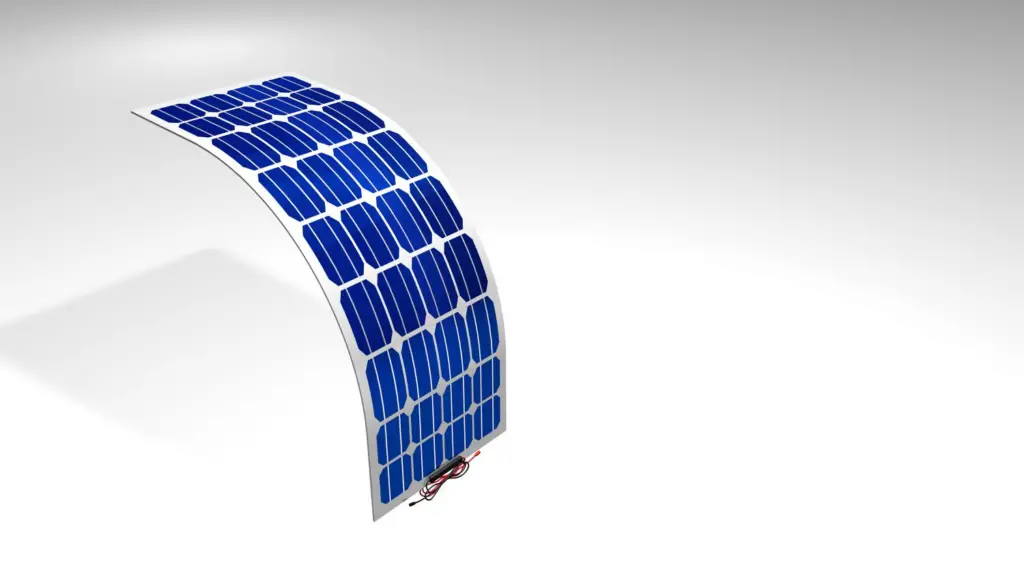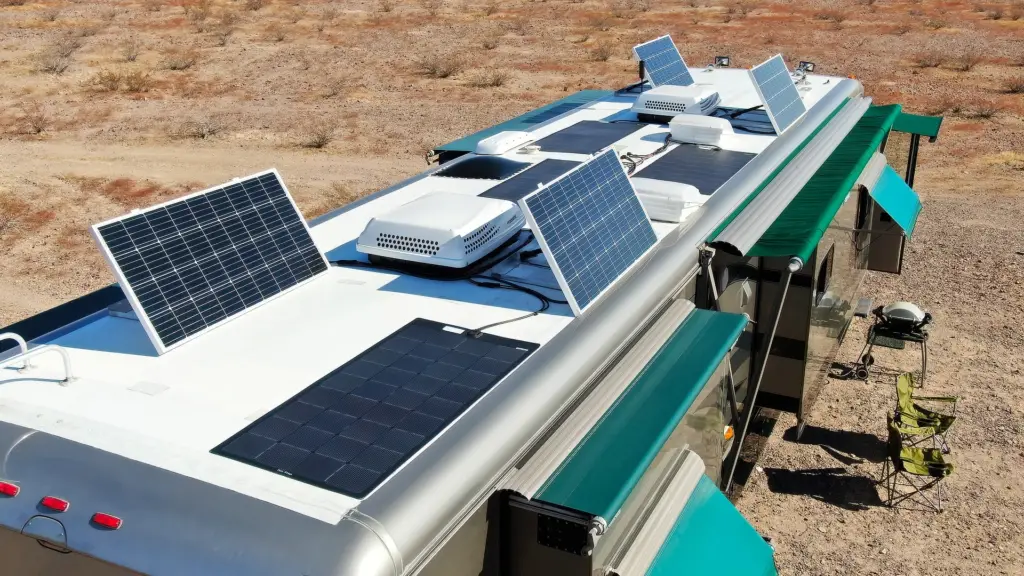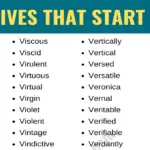
While we are relishing the wintery atmosphere and accompanying holiday season, summer will arrive before we know it. So this is the best time to explore solar energy options to avoid the cost of energy bills and contribute to sustainability.
Depending on your preferences, installing flexible solar panels can be a good idea to start your solar energy journey. In addition, they are reasonably priced and produce an equivalent quantity of energy.
If you want to get one, here’s your chance to learn about it and whether it’s worth buying one.
What is a flexible solar panel?
The standard fixed solar panels normally found on rooftops differ from flexible solar panels. Flexible solar panels come in many shapes and sizes and can be used in a wide range of situations than traditional panels.
As the name implies, flexible panels are made of pliant materials, which are less expensive than glass.
They can fit on curved and other tricky surfaces because of their flexibility. They are also excellent for off-grid and portable applications because of their dependability and compactness.
Unlike standard solar panels, flexible ones are more convenient to install and can be gotten online. They are also available in various shapes, price ranges, and wattage.
How do they work?
Flexible solar panels operate like the traditional ones everyone knows. However, they share a common photovoltaic (PV) technology foundation. PV means the capacity to produce solar energy from direct sunlight.
These panels usually don’t have a protective glass or metal coverings like conventional solar panels. Instead, a flexible polymer called ETFE is used to cover it. As a result, the panel is kept as light and thin as possible, and the cells can continue to be pliable.
This type of panel frequently uses silicon wafers which are far smaller than those in regular panels. The silicon wafers are as tiny as just a few micrometers in width. Also, solar cells can now be installed on different surfaces, including glass and sticky ones, thanks to the development of wafers made from other materials like graphene.
Types of Flexible Solar Panels
Flexible solar panels come in different forms, and they are as follows:
a. Thin Flexible Solar Panels

This type of solar panel is made by printing or gluing a photovoltaic(PV) material to a thin, flexible surface. It contains, among other things, cloth, aluminum sheets, and heavy paper. Thin films are less durable than crystalline ones if they don’t have silicon protection.
However, they are extremely versatile and can be used in different situations. For example, they are perfect for camping excursions because they can be rolled up for storage. They are also incredibly lightweight.
b. Crystalline flexible solar panels

A flexible crystalline panel comprises many flexible, crystalline photovoltaic solar cells and silicon. Depending on its thickness, the silicon material is stacked in various ways. For starters, silicon wafers are thinly cut into thin slices for use in lightweight panels.
Thin-layered flexible silicon panels are also used by putting it between a protective layer. Crystalline silicon panels are often built with plastic to increase their portability and durability. They are more popular at the moment.
Uses Of Flexible Solar Panels
Flexible solar panels offer a range of uses due to their unique features. Here are just a few uses for flexible panels:
I. Boating

Boats take much energy to keep things like navigation lights, communication systems, and autopilot features functioning.
Flexible panels can be shaped to meet the atypical designs of many boats, whether at the top of a wheelhouse or the shade canopy over a deck.
Smaller boats, like sailboats, can utilize flexible solar panels to keep the batteries completely charged, while large vessels can use them to run less often on the engine.
It can also generate solar power by being mounted on unused portions of your boat due to its versatility and lightweight construction.
Ensure that you spend your money buying the ones suitable for marine life. Using a battery to store your solar panels’ electricity is also advisable.
ii. Camping and Hiking

If you are concerned about running out of power while hiking or camping, you can attach a flexible panel to charge your phone. You can do this by attaching it to any exposed side of your backpack.
It functions just like a power bank. However, a panel is a better option if you plan to go trekking and camping for a few days.
In addition, a flexible panel is better equipped to absorb both direct sunshine and the refracted light from snow when camping in the winter.
iii. RVs and Campers

Flexible solar panels are simple to install on an RV or camper and can be used to power lights and other appliances. With solar energy, you can charge your batteries anytime to use them at night. You can also use it to power your lights and appliances.
Many RVs, motorhomes, and trailers are solar-ready or equipped with solar power. Your system will operate most effectively if your solar panels produce enough power. You should also have a battery to store that energy at night and on rainy days.
Flexible panels are simple to install and add little weight to your car. Instead of camping in a congested campground or RV park, you can camp in a public area.
An Alternative to Standard Rooftop Panels
Household roofs that cannot withstand the weight of normal solar panels can use flexible panels. Flexible solar panels are simpler to install than conventional solar panels because the latter needs mounting brackets and sealing materials to prevent roof leakage.
Advantages of Using a Flexible Solar Panel
a. They are Lightweight
Flexible solar panels are relatively lightweight and simple to install yourself. They are built with thin solar cells and polymers, unlike the conventional ones with several layers of glass, metal, and thick solar cells. As a result, a flexible solar panel weighs between four and ten pounds, but a conventional solar panel weighs up to forty pounds.
The width of flexible solar panels is much smaller than regular solar panels. It enables it to fit curved surfaces, like the curving top of an RV or boat.
b. It is very Portable
The portability of flexible solar panels is its main asset and the reason they were created in the first place. A flexible solar panel may be transported practically anywhere, whether on a boat, in an RV, or a hiking backpack.
c. The installation process is simple
Flexible solar panels can be mounted easily using an adhesive like Velcro tape or magnets. Unlike standard solar panels, which must be mounted to a racking system. Customers seeking portable solar panels frequently choose flexible solar panels because they are simple to install.
Options for Installation
Flexible solar panels may be ideal for low-load-bearing surfaces that can’t support traditional solar panels due to their design.
Flexible solar panels are very popular for boats, travel trailers, and RVs. They can also use them for smaller residential projects like detached garage or work shed. Additionally, they are simpler to remove.
Can be Used on Unusual Surfaces
Normal solar panels cannot be used on curved surfaces, but flexible solar panels can. Most flexible panels can bend up to 240 degrees. So it might be on a van’s curving top or an RV’s uneven roof surface.
They may also fit them without causing any damage on delicate surfaces because of their lightweight frame.
Downsides of Using A Flexible Solar Panel
a. it has Low Efficiency
Flexible solar panels typically perform less efficiently in direct sunlight than conventional solar panels. Compared to the 20% to 23% efficiency of conventional panels, they can convert 7% to 15% of solar energy.
In addition, flexible solar panels typically have low-efficiency ratings, meaning that more is required to produce the same electricity. As a result, they aren’t a common option for residential roofs with limited space. With flexible solar panels with better efficiency ratings, you will need to budget more.
Also read: 25 Ways To Save Electricity And Energy At Home
b. It has limited Power Output
The amount of solar electricity panels generate is measured by their wattage. When there is higher wattage, then more electricity is produced. However, their power output is constrained.
Even with up to 25% efficiency, flexible solar panels are only available in capacities of up to 300W. However, it can charge a portable battery in a boat or motorhome. When attempting to power a dwelling, this will not work.
c. It has a limited Lifespan and Warranty
While standard solar panels have a 25-year warranty, flexible solar panels normally have a 5-year warranty. This is because the materials they are made of are mostly responsible for their limited lifespan.
The thin solar cells and polymer coating are less sturdy than the glass and metal used in conventional panels. Also, because they are coated with plastic, flexible panels are susceptible to cracking and discoloration.
Flexible solar panels are likely to be harsh. It is due to their primary use as a portable power source on water and land. It may have a shorter lifespan due to these conditions.
Conclusion
The ideal choice for you when purchasing a solar panel will depend on your needs and application. If you require a solar energy solution that is both light and portable, a flexible solar panel will be your best choice.
Flexibility comes with ease in terms of strength, effectiveness, and durability. However, consider your needs and pocket to be sure your investment is worthwhile before purchasing something you might not utilize.
Related posts:
- Harnessing the Power of the Sun: A Guide to Solar Installation - February 12, 2024
- Vacuum Trucks: The Unseen Heroes of Waste Management and Their Environmental Benefits, Featuring McDonald Farms - December 11, 2023
- Satellites And Climate Adaptation: Solutions From Space - December 1, 2023






